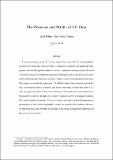The Promises and Pitfalls of 311 Data
Author(s)
White, Ariel R.; Trump, Kris-Stella
DownloadSubmitted version (3.506Mb)
Open Access Policy
Open Access Policy
Creative Commons Attribution-Noncommercial-Share Alike
Terms of use
Metadata
Show full item recordAbstract
Local governments operate 311 service request lines across the United States, and the publicly available data from these lines provide a continuously measured, geographically fine-grained, and non-self-reported measure of citizens’ interactions with government. It seems a promising measure of neighborhood political participation. However, these data are empirically and theoretically different from many common citizen-level participation measures. We compare geographically aggregated 311 call data with three other measures of political and civic participation: voter turnout, political donations, and census return rates. We show that rates of 311 calls are negatively related to lower cost activities (voter turnout and census return rates), but positively related to the high-cost activity of campaign donation. We caution against interpreting 311 data as a generic measure of political engagement or participation, at least in the absence of high-quality controls for neighborhood condition. However, we argue that these data are still potentially useful for researchers, because they are by definition a measure of the service demands that neighborhoods place on city governments.
Date issued
2016-11Department
Massachusetts Institute of Technology. Department of Political ScienceJournal
Urban Affairs Review
Publisher
SAGE Publications
Citation
White, Ariel and Kris-Stella Trump. "The Promises and Pitfalls of 311 Data." Urban Affairs Review 54, 4 (July 2018): 794-823
Version: Original manuscript
ISSN
1078-0874
1552-8332